Over time, I find shooting at the same old targets to get a little bit boring. I wanted to find something that would hold my interest and at the same time give me some sort of gauge as to how my skills were coming along. Sure, I could keep shooting at those old bulls eye targets trying to get higher scores, but let’s face it, I don’t compete (just yet) and my interest in firearms is more on the defensive side of the house as opposed to the target shooting side. With this in mind, I thought it might be interesting to compare my skills to the professionals . . .
Could I, for example, pass the shooting qualification for (insert your favorite law enforcement or shooting organization)? Can I truly shoot like a Navy SEAL (sorry, had to slip that one in)? I’m going to do a series of articles over the next weeks and months where I’m scour the interwebs as well as talk to some of the folks I know in the business to bring you some of the qualification criteria of your favorite (and not so favorite) “operators.”
First up, let’s start with the granddaddy of the U.S. Federal police forces – the Federal Bureau of Investigation better known as the FBI. Truth be told, the FBI recently (last year) changed the course of fire of its qualification to better reflect the reality that most gunfights take place at close quarters. The original qualification standard that had been in place for nearly three decades had candidates shoot from as far as 25 yards out with 56% of all rounds fired being done so from 15 yards or more. The new qualification standard has 67% of the shots fired from 7 yards or less. We’ll look at the new qualification standard in a separate post. For those who want to see how they would have compared to the “old school” standard, let’s get to it.
The target used for this qualification is the ubiquitous “Q” target. You can use either the FBI-Q-AT target which is printed on cardboard or the Q-T Target which is printed on paper.
Before running out and picking up a boatload of Q targets, you might want to consider the QIT-99. This is a modified version of the standard Q and is the one used in the new FBI qualification standard. It has a smaller hit area, but also features an outline of the original Q size.
One thing to bear in mind about these qualification standards is that they are often built around the service weapon in use by the agency creating the qualification. The FBI’s qualification standard was built around the SIG SAUER P229 pistol in its Double Action/Single Action (DA/SA) incarnation. The qualification standard instructs the shooter to decock during some of the shooting strings. If you want to really challenge yourself, you can run with a DA/SA gun and see how you would do with the different trigger pull weights. However, you don’t need a DA/SA to test for the standard because the FBI switched to .40 GLOCK handguns for most agents and 9mm GLOCKs to those who had problems managing the .40 in 1997. Today, agents qualify with striker fired pistols in .40 or 9mm. That said, there is nothing wrong with a DA/SA gun nor for that matter with a 1911, the gun favored by the FBI’s vaunted Hostage Rescue Team and some of their SWAT units.
Scoring: Shooters receive 2 points for every round that lands inside the Q bottle. Shots that break the outline of the bottle count. The course of fire is 50 rounds and candidates must shoot 85% or better to qualify. Instructors must shoot 90% or better. 85% is actually 42.5 rounds, which makes no sense to me, so let’s call a qualifying score 43 hits. Instructor qualification is 45 hits. There is no disqualification or penalty for hitting outside the bottle or for missing the target entirely.
Stage 1: 18 rounds, 25 yards, 75 seconds
Equipment Needs: a shooting mat and a barricade tall enough to stand behind.
The first stage will incorporate several different shooting positions.
Shooters start with gun holstered, hands at sides. On the beep, draw from the holster and fall into a prone position (a mat would be a nice thing to have at this point). Shoot six rounds from the prone position. Decock if you have a DA/SA gun. Next, duck behind the barricade in a strong side kneeling position and fire 3 rounds. Stand up (still behind the barricade) and fire six rounds in the strong side standing position (barricaded). Complete the stage by firing three rounds in the weak side kneeling (barricaded) position.
While it doesn’t sound like all that much, 75 seconds is an eon. Take your time getting your sight picture dialed in when shooting from prone. If you are not used to shooting a pistol while prone, you may not like this position very much, but bear in mind that this is the most stable shooting position and a good place to pick up 12 points by landing all six shots in the bottle. One thing to bear in mind; there are no 18 round magazines for the FBI’s standard issue .40 GLOCKs, so it is expected that the shooter will need to do a reload at some point during the stage. You may want to set things up so the reload takes place during the transition from strong side kneeling to strong side standing, thus making use of the transition time.
Stage 2: 10 rounds, 15 yards (but start at the 25), 2 rounds in 6 seconds; then 4 strings of 2 rounds in 3 seconds each
The second stage also begins at the 25 yard line, but you won’t be shooting this far out. At the beep, move to the 15 yard line, then draw and engage the target with 2 rounds. You should be able to accomplish this in 4 seconds. Decock. Next, hold the gun at low ready and at the beep, raise it and fire two more rounds decocking at the end of each two round string. Par time for this action is 3 seconds. Repeat three times more to get to the total round count of 10.
The hardest part of this stage is the initial 10 yard dash, draw, and engagement for those first two rounds. It’s not really all that difficult for a competent shooter and the four strings from low ready are an easy way to put points on the board.
Stage 3: 12 rounds, 7 yards (bust start at the15 yard line), 15 seconds
Starts at the 15 yard line. At the beep, move to the seven yard line, draw, and fire 12 rounds. One wrinkle that’s been tossed in is that the 12 round string must include a reload somewhere in the string. You can choose where you want to do it. I’d recommend it near the beginning of the string – perhaps after the second or third round That way, you can concentrate solely on your shot placement of the other nine or ten rounds.
Stage 4: 10 rounds, 5 yards (but start at the 7 yard line), 15 seconds
Start at the 7 yard line. At the beep, move to the 5 yard line, draw your weapon with your strong hand only, fire five shots, drop the magazine and reload. Then pass the gun to your non-dominant hand and fire five shots (one handed). Safely return the gun to the strong hand, holster, and you’re done.
Frankly, this is the only stage where time was a factor for me. Firing five rounds, reloading, passing the gun to the non-dominant hand, then firing five more rounds takes a bit of practice to get it done in under the 15 second limit.
Aside from the slight time budget issues I initially had with Stage 4, I found this to be a fairly easy qualification standard to pass. The Q target is huge. The valid target area is 26″ high and 12″ wide for most of the bottle. Unless you have serious motor control problems, you should be able to land a sizable majority of your rounds within the hit zone. Furthermore, there is no penalty for missing the target and the allowed time is pretty generous. Frankly, if you make your living with a gun, you better be able to pass this standard.
All that said, a couple of things to keep in mind. First of all, this is an out of date standard included purely for its historical value. Current FBI agents must qualify using the new FBI standard (which I’ll cover in an upcoming post). Secondly, many, possibly the vast majority of FBI agents will never have to draw their guns for anything but passing qualification standards. Sure, there will always be exceptions, but the fact is, the regular FBI troops are not expected to be “shooters” so the standard tests basic competence and not much else.
Give it a try and see if you have what it takes to be FBI material.

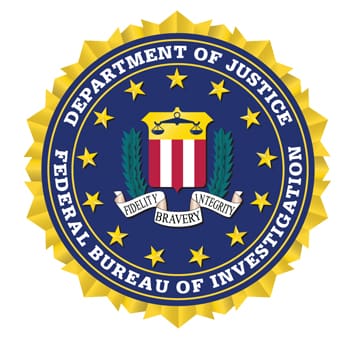
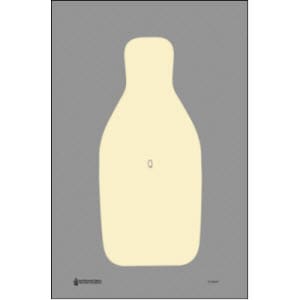
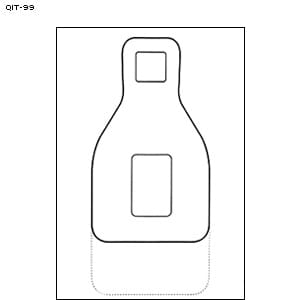

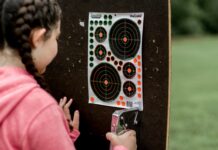
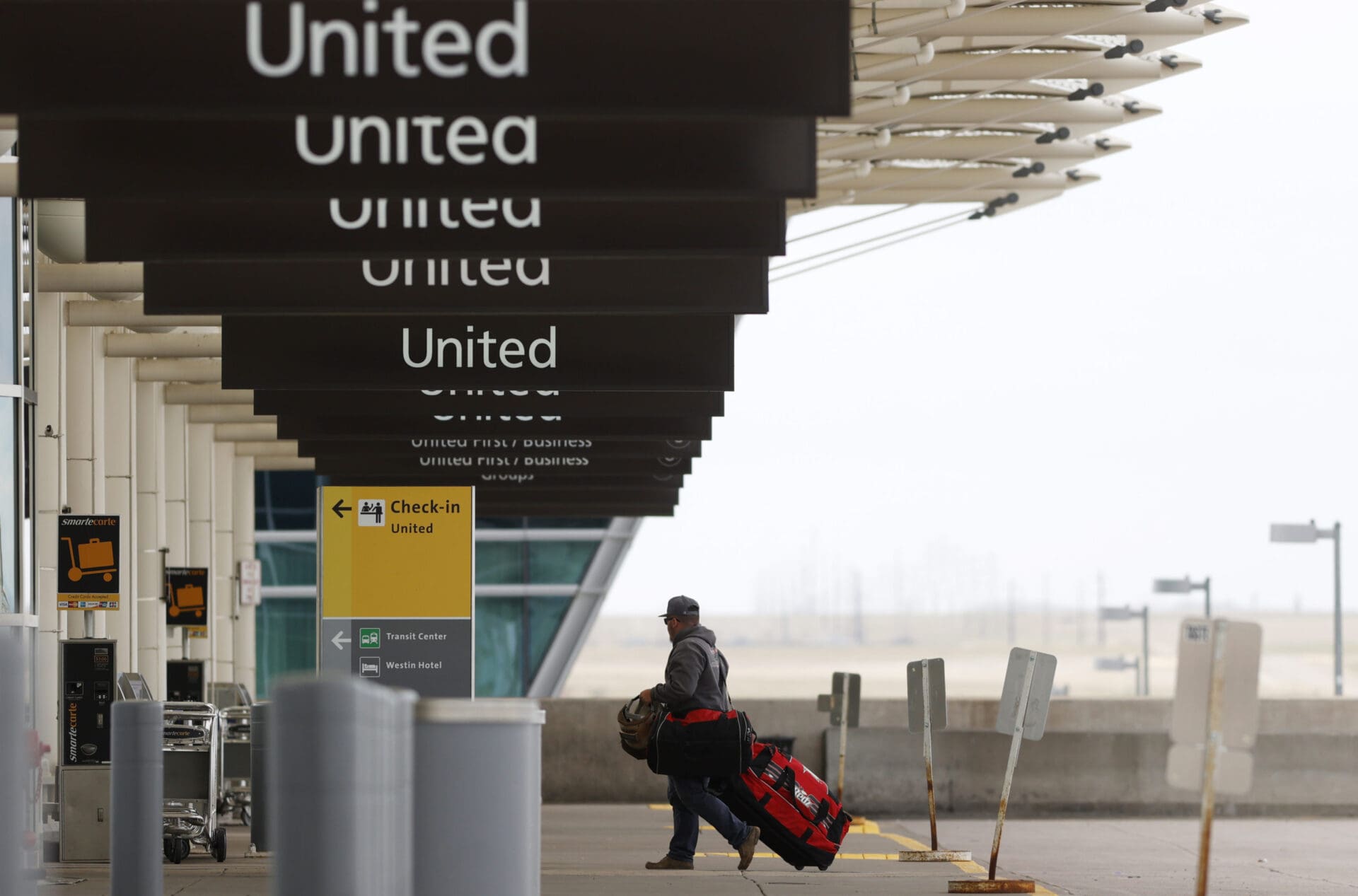
Very interesting. I’ll be looking forward to the rest of this series.
If you are the Jim R near my neck of the woods, I’d definitely enjoy shooting the FBI’s new Qual course.
I might be. Do you live around Pittsburgh?
Brea, CA. We have a Jim R and a Dean T running us on a Secret Service style course 4x / year.
I’m by Philadelphia. I must be your evil twin…
Anywhere in the Philly area where you can do something like this?
This is going to be a great series.
A companion video for each stage would be make it awesome!
Agree on both points.
I’d also like to hear how often each agency requires their officers to qualify, and whether or not they shoot the same course each time they qualify. Back in the medium good-old-days, the USAF pistol qualification for Law Enforcement personnel consisted of shooting every 6 months, but you alternated between two different courses; a basic pistol course, and a combat-style course that included more challenging elements.
If you’re right there talking with the trainers, it might also be nice to see a paragraph about each department’s current duty loads (brand/caliber/bullet weight, in each approved caliber).
Fun article and an interesting challenge, I too am looking forward to the series!
That course of fire looks a bit easier in general than the one we had to shoot for annuals quals in SC, except our ‘pass’ was lower. Scoring was a bit different, too.
We had to do Weak Hand Only from behind barricade at 25 yds. That was the undoing of quite a few otherwise good shooters.
Qualification at the CJA had one stage at 50 yards and another at moving targets, as well as some induced stress in place (RSO’s shouting at from behind, at night in the dark with multiple sets of vehicle lights, etc).
I do remember SC CJA qualification on the shotgun range was a lot of fun, but I don’t recall the course of fire.
Interesting stuff.
For a more contemporary comparison, try USPSA. When you shoot classifiers, you will be able to compare your result with other competitors. Shoot the El Presidente and see how you do against the modern masters and even the classic ones (Cooper recommended a par time of 10 seconds in To Ride, Shoot Straight, and Tell the Truth, page 88).
I really liked this.
Just wish I had access to a range that would allow me to try this.
Can’t wait to see the rest of the series.
I understand the USMC rolled out a new handgun course, to take effect in Nov 2014.
http://www.military1.com/military-policy/article/407348-marine-corps-phases-in-new-pistol-qualification
I wish I could like posts (other than reading them). This is a great idea. Of course, I will try with my 10mm 1911…
I wish I had a range that I could move and shoot on. While everyone is getting a stiffy over the new air-conditioned 100 yard indoor range, those of us who want to do practical defensive shooting either need to drop a couple hundred to join a club or make friends with somebody with a bit of land.
I gotta say it… Which stage do you shoot the dog in?
OH! There it is!
Wrong LEO group. It’s the ATF and the Podunk PD Part-time SWAT team qualifiers where you need the dog target.
The old Oklahoma law enforcement course was a 50 round course that started out at 50 yards. I understand that it was the same as the then current FBI course. We shot it with our wheel guns and even our 5 round snubbies. I shot a 74 with my new Model 640 Smith back in 1994. I know that’s not a very good score, but 50 yards is a LONG way for a 2″ barrel. About 10 years ago Oklahoma went to a 25 yard 25 round LE qualification course. They claimed that the course of fire was changed because “most gun fights are at short range” but most of us old timers believe that the qual was changed to save on ammunition (50 vs 25 rds) and to improve the scores across the board. Shooting 50 yards, even with a 4 or 5 inch barrel service pistol, is pretty tough. Instead of training people to a fairly difficult standard its easier to lower the standard.
The target links are to the LETargets folks; those are the “no hesitation target” dirtbags. I won’t be sending them a dime…
You can always shoot steel! I’ve been using the same FBI Q target from AR-500 targets for two years now and it has many thousands of rounds on it and it is truly as good as new. Sounds awesome when hit, too . VERY happy with it. I’m thinking of picking up a few more of their products and doing a review in the future, as I have also shot steel targets from two other companies and they did NOT hold up anywhere near as well.
. VERY happy with it. I’m thinking of picking up a few more of their products and doing a review in the future, as I have also shot steel targets from two other companies and they did NOT hold up anywhere near as well.
I wouldn’t want to shoot a steel target at < 25 yards with ball ammo.
An armor-hardened steel target turns ball ammo mostly to dust. Also, a downward angle on the target ensures that any larger pieces go downwards and not back to you. The angle of deflection to the face of the target is VERY shallow, due to the extremely hard surface. All of that splash is nearly parallel with the surface of the target. Completely and totally different from hitting normal steel that is not hardened to this level, which is dangerous to do.
There absolutely are safety guidelines to follow, but a properly-hardened and set up AR-500 or -550 target is one of the safest things you can shoot at and it’s completely and totally safe at much, much closer distances than 25 yards. Just ask Miculek, who’s been shooting steel up close for decades. Here he is blasting away with FMJ 9mm at “18 to 20 feet” (6 to under 7 yards): http://youtu.be/0FbUMqoyjDw?t=54s. You can see the spray of bullet particles on the dirt straight down from the face of the target. As his aren’t even angled, you can bet there are particles radiating out from the hit in a 360* fashion, but always nearly parallel with the face of the target.
^^^ all that said, this FBI course of fire does take you to 5 yards away and I do think that’s a bit too close. I have shot thousands of FMJ pistol rounds at steel from 7 yards and some amount from more like 5 yards but I do absolutely prefer to keep it at 7 or more just in case.
You can do bare lead, hollow point, or frangible as well, of course. But don’t think you’re limited to >25 yards with FMJ, as you simply aren’t with a quality target that is set up properly.
Unfortunately, these are the guys who make a lot of the specialty targets so you may not have much of a choice. Even when you buy these targets on Amazon, you are getting them through a reseller who gets them from LE Targets.
Weird, i was under the impression this qual started when 3″ k frames were the norm….
I believe those came in in the early 90s shortly before the switch to semi-autos. I had one for a few years and kept it till they took it away. But the issue gun in 1978 was the 2-1/2 bbl. so females could put it in a purse.
I knew a copper in charge of his (rather small) department’s qualifications. He made them qualify quarterly, with one annual being the ‘state mandated’ qualifications. The others were ones he scavenged out of the bowels of the interwebz. His favorite was the one where, for adrenaline purposes, they had to do five pushups, draw and fire six rounds, and alternate that until 60 rounds had been fired, all while he manipulated that target to different distances. They wouldn’t know how far they were shooting until they stood up from their pushups.
Were there distance markers on the traveling target frames, or did they have to estimate range?
Yeah, brings back memories. For my first 13 years, I think it was, before switching to the semi-auto, our revolver course started at the 50 yd. line–18 rounds, timed, with the 2-1/2 barrel issue gun (I was too cheap to pop for a more appropriate size). I’m fuzzy on the details, like the time limit, but it was 6 prone, 6 standing strong hand and 6 standing weak hand. We were allowed to shoot single action from the fifty, but most of us didn’t because you got so used to double action. Standing, we were supposed to have a support, but generally it wasn’t available. Then we moved on to 25, 15 and 7. I believe this revolver course was modified at some point, subtracting rounds from the 50 and adding them at a closer range–or something like that.
At the seven yd line, which was the closest we got with the revolver, we shot 12 rounds, which meant reloading, of course. Initially we had to have all the rounds loose in our pockets, but you got used to grabbing six at a time. Funny to think of, now.
Of course those were the qualification courses. There were also various warm up courses and other more specific training course, along with shotgun, etc. I remember some of the fun courses of fire, too. One, I believe, was learned from some German outfit and was quite different. I think they called it G-something-or-other. We had another course (this was with semi-auto) in which we did a lot of moving, shooting from cover, using both hands, knocking down plates, etc. I recall people with 9s had to hit the plates right near the top to knock them down (you got two tries at each plate, 2×5 = 10) but those like me who had 10s and 40s could just go for the center of the plate.
I forgot to add that at the 7 yd. line for the RQC, we were doing what we called “hip shooting.” You’d slide your weak side foot to the outside so you went into a semi-crouch while drawing the revolver and shooting your 6 reload 6 from the hip–actually you tucked your elbow in toward the middle of the body, but your forearm was parallel to the ground and the gun was more or less at hip level. In reality there was a fair amount of “cheating”–bringing the gun up a bit higher, maybe chest level, that was tolerated. It was very easy to miss from the hip without constant practice. Also, time constraints were way too tight to allow dumping rounds into your hand, much less from the hand into a can.
There were a lot of practice drills, also. One I recall off hand was standing back to target, wheeling around, then drawing and shooting.
I ran the old USCG course with a DA/SA 92 and always struggled. If you can find that COF, post it. Id love to take it again.
Great idea. Looking forward to more
Wow, this takes me back to the old police qualification days of the 70s and 80s where we began at 7 yards and went out to 50. That course was not very realistic. Many guys dumped the empties (we used wheelguns back then) in their hand then dropped them in a coffee can to facilitate clean up. As stress actions = training this sometimes resulted in tragic actions.
The course of fire above sounds pretty easy. We used to shoot the old air marshal course. The time limits and the fact that it was fired from concealment made that challenging.
I still like El Prez. When someone do that in < 8 seconds, down zero it is a pretty good indication of gun handling ability. Ditto weak hand firing. This "new" FBI course sounds like something to warm up on.
How are you not penalized for missing the target when you need to have at least an 85% hit rate?
You are, technically, but I think the reference was to certain types of scoring used in some competitions, where points would be subtracted from your total (or time added, in time-totaled runs) if you “failed to neutralize” (completely missed) a target in some stages. I could be wrong on this, but that’s the way I read it.
In any case, a miss IS a penalty under the described scoring system, you are right about that.
All together now: “Missing is bad, m’kay?”
I found the concept of ‘shoot like the pros’ in reference to FBI agents to be silly, and in closing the author admits as much.
Do they have a set training standard for things agents of the Feral Bureau of Instigation/Incineration might actually be required to do on a regular basis, like instigating crimes in a militia setting to entrap right wing loonies (Huttarees), building bombs capable of killing little black girls in churches(Birmingham), and more importantly, successfully setting occupied structures on fire (Mount Carmel)?
The range I shoot at uses the modified FBI protocol for the shooting portion of their CCW class. Although not required by Virginia they are pretty stringent. I don’t know if they refuse to certify you if you don’t pass. They use the full protocol, modified only by putting the shooter in the kneeling instead of prone position , for their RSO’s. I have only shot military style quals which are traditionally less demanding, 75% or 38/50 from a standing position with 40% of the shots taken beyond 10 yards. The FBI qual, especially the new one, is one few LEO measures that I find representative of what a private citizen would face. I probably could make the score but not within the time limits given. I will give myself a fail until proven otherwise.
Very interesting that you post this up now; I have been looking around for the same sort of thing.
I have found Trident Concepts Modified Navy Qual, the MEUSOC Carbine-Pstol Qual, and the old US Army 25m pistol Qual; OK, so the Army one is all that good, but….
Also the F.A.S.T. Pistol drill.
A much more involved test is the IDPA Classifier.
I would love to find something for a centerfire rifle out to 100 or 200 yards (meters)
Actually, the Appleseed AQT isn’t too bad even though it is meant really to be fired at 25m with a rimfire rifle.
This one will be added.
Thanks,
Greg
Does anyone know the Israeli or British course of fire?
Both countries carry in Condition 3 (no round in chamber, magazine inserted). I would be curious to see how they include having to chamber a round into their course of fire.
Nice Ideas
Thanks for Sharing some best Idea!s
If you want a tougher Qual course give this a try….
FBI SWAT/HRT Qualification
HRT/SWAT TPC
25 YARD LINE 18 rounds in 45 seconds
Draw from holster.
6 rounds prone
6 rounds standing
6 rounds weak side kneeling (weak hand)
15 YARD LINE 8 rounds total
Draw from holster.
Fire 2 rounds in 3 seconds from standing position. Repeat 3 times from holster.
(4 strings of 2 rounds)
15 YARD LINE 7 rounds in 6 seconds
Draw from holster.
Fire 7 rounds in 6 seconds from standing position.
10 YARD LINE 7 rounds in 5 seconds.
Draw from holster.
Fire 7 rounds in 5 seconds from standing position.
7 YARD LINE 10 rounds in 12 seconds.
Draw from holster.
5 rounds strong hand only standing.
Reload.
5 rounds weak hand only standing.
Comments are closed.